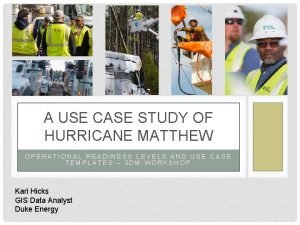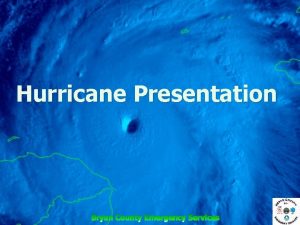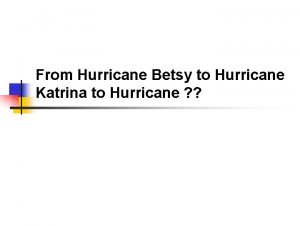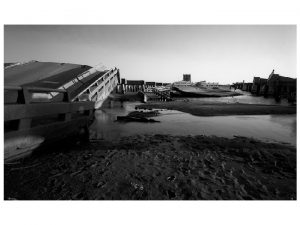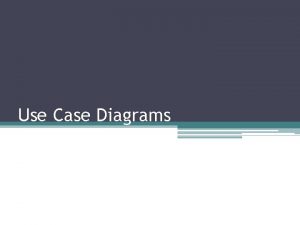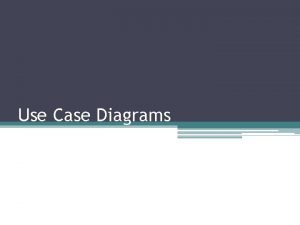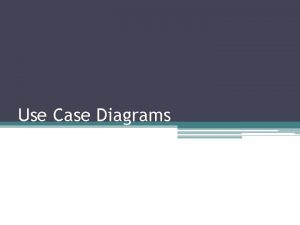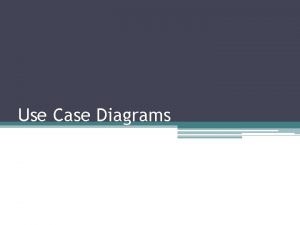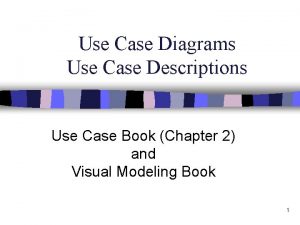Hurricane Irene A Case Study for the Use














- Slides: 14

Hurricane Irene: A Case Study for the Use of Underwater Sound for the monitoring of Mesoscale Convective Systems Occurring in the Ocean John Proni 1 John Wilkerson 2 1 NOAA-AOML (Emeritus). Currently at Applied Research Center, Florida International University, Miami, Florida 2 NOAA-NESDIS (retired)

Introduction The possibility of using underwater sound for the measurement of rainfall over the open ocean is receiving considerable attention today. In this presentation underwater sound and radar data recorded during the passage of three mesoscale convective systems over the area of Andros Island, Bahamas, in October of 1999 is discussed. The three systems are influenced by the passage of Hurricane Irene and appear to be entrained in the general wind flow pattern of the hurricane.


Raindrop Ocean Surface Bubble Sound Pressure Wave Time




Hurricane Irene storm track, 10 -14 -99 through 10 -16 -99


H 12 H 7

Correlation Coefficient -22 -15 Lag (Minutes)



Summary and Conclusions The underwater sound spectra recorded at the AUTEC range during the passage of hurricane Irene fell primarily into three categories: a) wind dominated, b) convective rainfall and c) stratiform rainfall. Scatter diagrams of the spectral amplitudes at 4 k. Hz and 15 k. Hz show the existence of a "closed loop" or observation cycle in the underwater sound measurements during the passage of three air-sea interaction/precipitation events over the measurement site (If the wind field changes over the site during the occurrence of the event the loop is not closed and the starting and end points are displaced by an amount proportional to the change in wind speed). The observation cycle of the underwater sound measurements can be interpreted in terms of the "life-cycle" put forward by Houze (1993) for mesoscale convective system complexes. Using the Houze life-cycle concept an estimate of the degree of maturity of the passing MCS can be made from the state of the underwater sound cycle. The same underwater sound life cycle has been observed at various sites including water depths as shallow as one meter to depths greater than one kilometer.
 Hurricane matthew case study
Hurricane matthew case study Best case worst case average case
Best case worst case average case Project failure case study
Project failure case study Iso 22301 utbildning
Iso 22301 utbildning Typiska drag för en novell
Typiska drag för en novell Nationell inriktning för artificiell intelligens
Nationell inriktning för artificiell intelligens Returpilarna
Returpilarna Shingelfrisyren
Shingelfrisyren En lathund för arbete med kontinuitetshantering
En lathund för arbete med kontinuitetshantering Särskild löneskatt för pensionskostnader
Särskild löneskatt för pensionskostnader Tidbok yrkesförare
Tidbok yrkesförare Anatomi organ reproduksi
Anatomi organ reproduksi Densitet vatten
Densitet vatten Datorkunskap för nybörjare
Datorkunskap för nybörjare Stig kerman
Stig kerman
